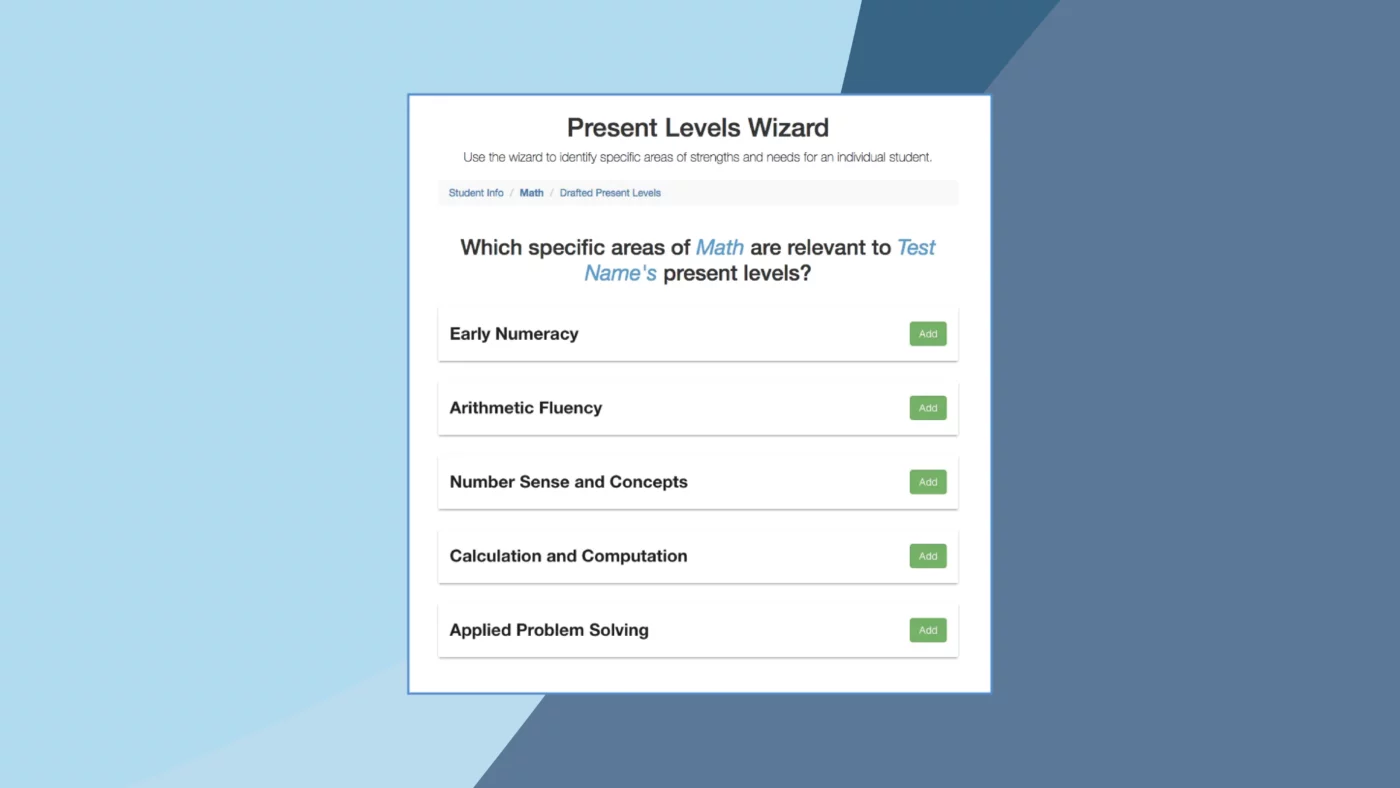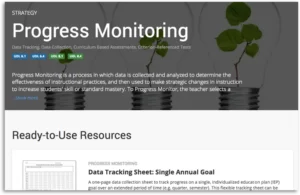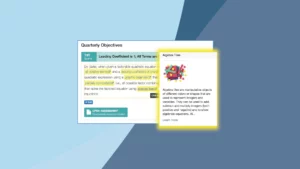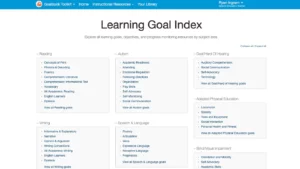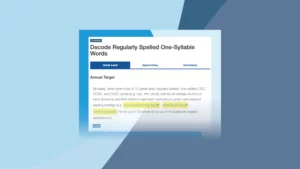Our beta preview launch of the Present Levels Wizard featured one subject area: reading. Despite this limited release, we received a ton of feedback similar to the comments below:
I think the addition of present level examples is great — what makes it more exciting is that there are examples of CBAs and other assessments to use in order to collect current data. This is a great tool for new teachers.
The present levels wizard is amazing. Will there be more skill areas added soon?
Is there a reason why only reading is available? Am I not able to look up information for math in the present levels wizard section?
These sentiments validate the power of knowing students deeply on a personal level as well as their levels of performance. We are excited to announce an expansion of the Present Levels Wizard to a new subject area: math.
The Challenge of Developing Math Present Levels
The primary challenge of developing a student’s present levels for math is the sheer breadth of domain-specific skills students are expected to master. Here are just some of the topics addressed in 4th grade by the Common Core: multi-digit multiplication, multi-step word problems, factor pairs, number patterns, multi-digit place value, fluent addition/subtraction, quotients and remainders, comparing fractions, addition/subtraction of fractions, fraction word problems, fraction multiplication, decimals, decimal/fraction conversion, measurement, area and perimeter, line plots, angles, 2D figures, lines of symmetry, …
Given the broad scope of math, our key design question was this: Which math skills are the most critical when describing a student’s present levels of performance in math? In an effort to address that challenge, we leveraged knowledge in the following areas:
1) Educational research on math assessment and math achievement
2) Priority standards/skills based on standards analysis and coherence maps
3) Frequently-assessed skills based on widely-used measures (e.g. state assessments and RTI assessments, such as AIMSweb and DIBELS Math)
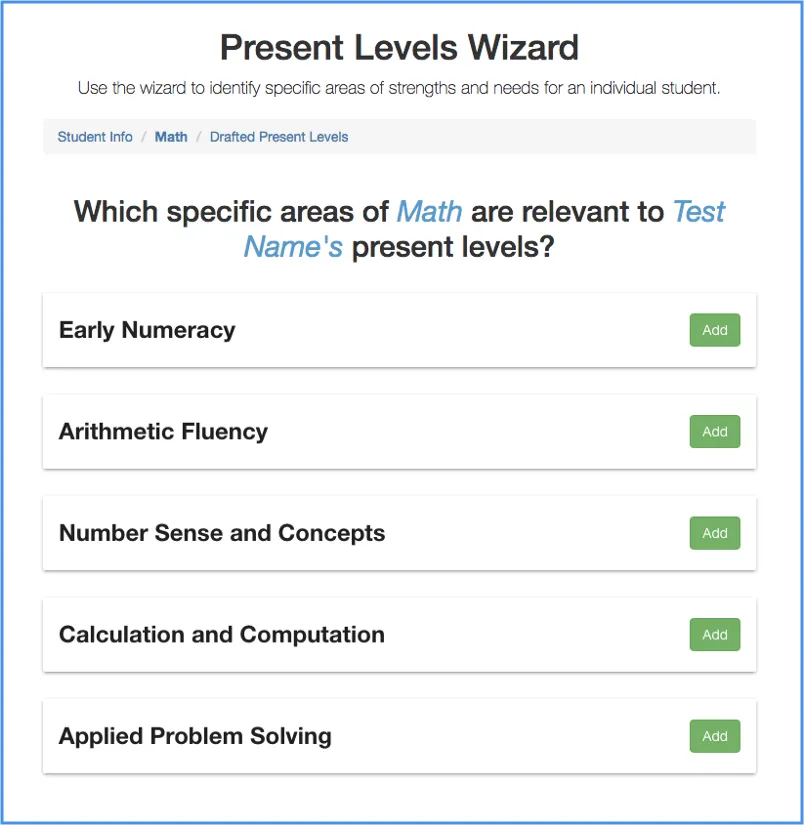
Educational research on math assessment and math achievement informed our work at every step.
To develop our Early Number Sense statements and resources, we looked at what educational research has studied around the importance of number sense in early grades (e.g. Schatschneider, Carlson, Francis, Foorman, & Fletcher, 2002). We also looked at research-based and widely-used assessments, such as the Number Knowledge Test, to understand developmental expectations through the early grades. Because of this, we wanted to make sure that this section had various representations (objects, verbal, written) of numbers, which is a key finding and predictor for future success.
Our Number Sense and Concepts work was influenced by the latest research (e.g. Boaler, 2015) around how to ensure students have flexibility and fluidity with numbers that is reinforced by understanding number lines, base ten blocks, and other number representations.
Our Arithmetic Fluency sections were based on a synthesis of studies on fact fluency benchmarks by grade level (e.g. Burns, VanDerHeyden, & Jiban, 2006).
We prioritized skills based on standards analysis and coherence maps.
Through a vertical and horizontal analysis of standards, as well as published standard progressions and coherence maps, we identified the most highly leveraged standards — the ones that are foundational to mastering other skills in the grade level and in future grade levels.
Our Number Sense and Concepts, Calculation and Concepts, and Applied Problem Solving sections focus on these high-priority skills and provide targeted assessments so that educators can quickly assess their students’ present levels of performance with skill and accuracy.
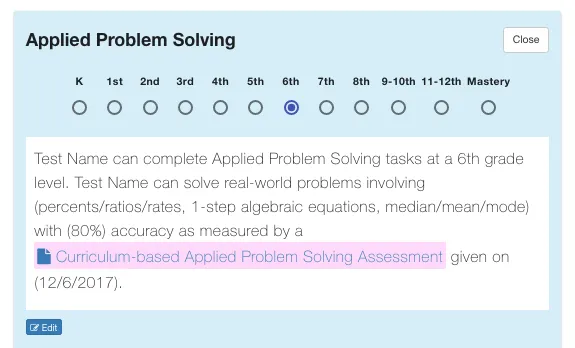
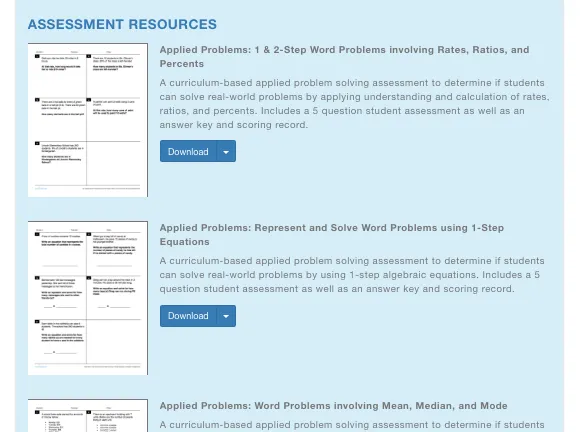
Frequently-Assessed Skills Based on Widely-Used Measures
We analyzed and compared items from state tests (SBAC, PARCC, Achieve) as well as widely-used RTI assessments, such as AIMSweb and DIBELS. These informed the items on our assessments aligned to Number Sense and Concepts, Calculation and Computation, and Applied Problem Solving assessments.
What’s Next?
Based on the positive reception of our beta preview release, we are committed to expanding our Present Levels Wizard. The areas of Present Levels we will be focusing on next:
- Behavior and Social/Emotional Learning
- Writing
- Functional and Life Skills
